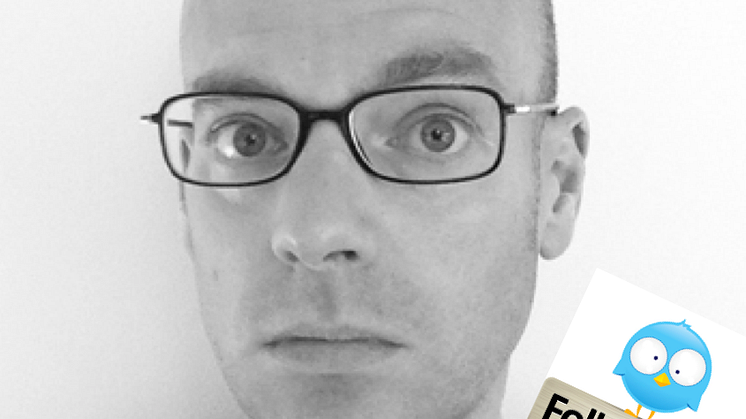
Blog post -
How I reached 5,000 followers
When I joined Twitter in 2009, I had no idea what it was for. I’m still not that sure, but I must be doing something right, because over the next three years I managed to rack up 5000 followers. Here are my thoughts on how that might have happened.
Now, you may already be thinking something along the lines of ‘Why aim for loads of followers? Surely a relevant, living network is better than an army of spambots?’ That’s true, of course. But at the same time, there’s no escaping the fact that quality does equal quantity on Twitter.
The most successful Tweeters are those who consistently create and share quality content, building a large network in the process. Of course, a large following doesn’t necessarily denote quality, just as a small following doesn’t necessarily denote dross. But all else being equal, your follower count is a reflection of how well you’ve played the Twitter game over the course of your Twitter ‘lifetime’.
One way to get lots of followers is by following lots of people who are likely to follow back. Unfortunately, that tends to be those using Twitter to push their own services (or attempting to). All those followers look good from outside, but inside you’re silently screaming at a feed stuffed with links to products you’ll never buy, blog posts you’ll never read or news you’ve already seen. I firmly believe that there’s no point doing social media you don’t enjoy, so I soon learned to steer clear of the spammers and space-fillers.
I will follow
In fact, I’ve now developed fairly strict unwritten rules on who I follow back. ‘Talking logo’ company accounts are generally unappealing, unless they’re as funny as @Mangal2. People who post nothing but links are unwelcome too; my problem isn’t finding good stuff to read, but finding the time to read it. Banal oversharers (‘Very tired tonight’…’Having cup of tea’) are right out – but I don’t object to trivia, as long as it’s memorably expressed.
Since I don’t follow everyone back, my follower count hasn’t grown as quickly as it could. People follow me, realise I’m not going to follow them back, and drift away again. But those who are truly intersted do hang around, making slow and steady progress the best way to build a sustainable network in my opinion.
As of today, I’ve got a follower:following ratio of around 5:3 (5011 followers, 2850 following). That makes me the sort of person I myself like to follow, and be followed back by. I’m not totally indiscrimate, but I’ll give new people a whirl, and I’m not so up myself that I only deign to follow about 15 people. When I’m followed back by someone like that, it feels like a compliment.
Network building
I’m not sure what lessons I can offer to those wanting to use Twitter for business. Almost immediately after joining the site, I realised that most of my key clients and prospects didn’t use Twitter – and those who did weren’t there to find suppliers. But Twitter has still helped my business, just in a very indirect way.
Instead of clients, I found myself networking with other copywriters, as well as those from related disciplines like design, web development and marketing in the broadest sense. They shared and commented on my blog posts, which boosted my following further and enhanced my SEO profile. After several years of this, new clients began to mention that they’d enjoyed a post of mine, and it had encouraged them to get in touch.
So while Twitter is far from being a new-business machine, it does play an important role in the process. When people ask me about using social media commercially, I always speak from my own experience: do what you enjoy, set achievable targets and be realistic about the likely results.
Brands are often told to inject personality into their social presence. I think they should be themselves, which isn’t quite the same thing. Social tone should be a revelation, not an affectation. Personally, I don't want to see my web developer wittering on about Wimbledon. I want to see them getting into an insanely obscure discussion about Ajax queries. I may not be able to ‘engage’ with it, but it shows they know their stuff and they care about it. If there is a strategic objective to being on Twitter, it’s probably the successful projection of a professional, human but above all genuine personality.
Business or pleasure?
Over time, I’ve drifted away from a ‘businessy’ approach to Twitter and closer to a more personal approach. My bio used to be a potted cv; now I usually prefer something far shorter and more cryptic (e.g. ‘I can explain’). As well as sending a meta-message about my writing skills, I think this is probably more effective in attracting the sort of followers I’m really interested in.
Also, Twitter isn’t LinkedIn. Despite the tiresome ‘Who to follow’ hand-holding, the attraction of the site is discovering who people really are through their words and responses, not who they say they are through an online profile. This in-the-moment edginess is precisely the appeal of the site.
The juxtaposition of business and pleasure can be intoxicating, but it can also be uneasy. I often curb the more trenchant, pessimistic side of my personality because sharing it seems unprofessional. Unlike younger users, I self-censor if I feel people might take offence at my words – through politeness rather than fear. And as a professional writer, I want my feed to reflect a certain level of quality; I don’t want it to be a formless splurge of pointless mood-sharing, me-too reactions to the news or better-left-unsaid drunken replies.
Although my attitude and approach to Twitter have changed a lot, I still use the site obsessively. As a writer, I love the literariness of it – the premium it places on concise and memorable expression. As a solitary home worker, I love being able to hook straight into a massive network of like-minded freelancers at will. And as a human being, I love the incredible variety of personalities, opinions and backgrounds that it presents. Long may it continue.
- Tom Albrighton is a copywriter, founder of ABC Copywriting and co-founder of the Professional Copywriters’ Network. You can follow him on Twitter here.


